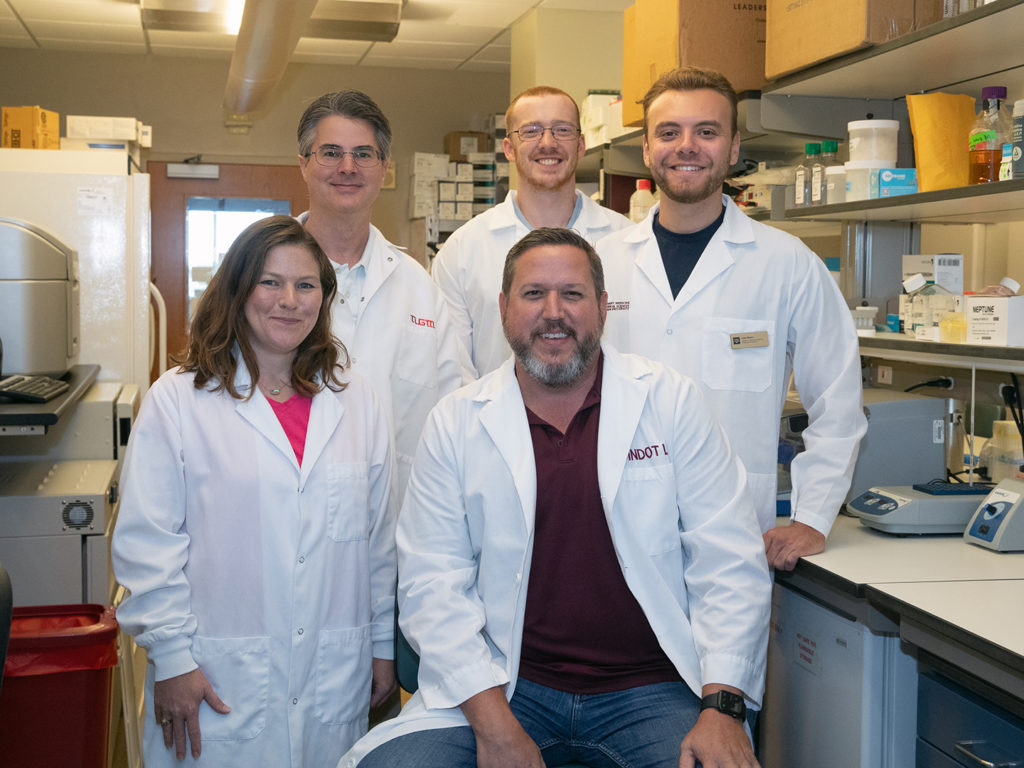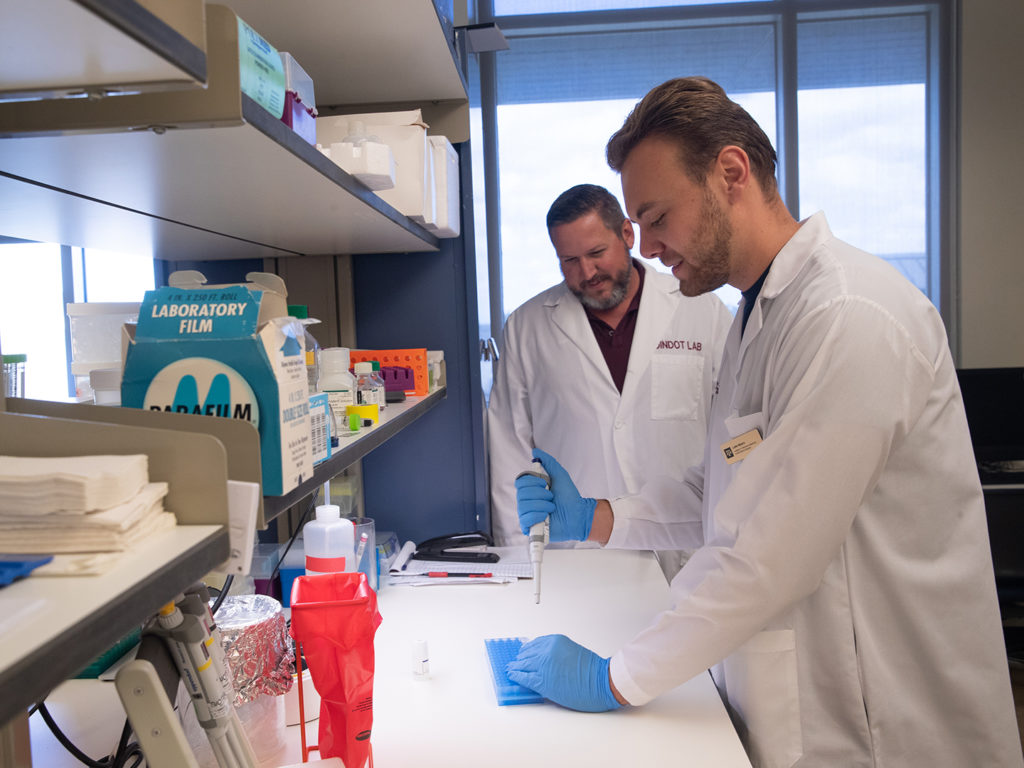Biopharmaceutical Company Expands Clinical Trials For Texas A&M-Developed Angelman Syndrome Treatment
Story by Jennifer Gauntt, CVMBS Communications

A treatment for a rare disease that was researched and developed in the laboratory of Texas A&M School of Veterinary Medicine & Biomedical Sciences (VMBS) associate professor Scott Dindot has not only produced encouraging interim data from a phase 1/2 clinical trial in the United States, United Kingdom, and Canada but has become the subject of a $75 million acquisition by Ultragenyx Pharmaceutical, Inc., which will continue to develop the treatment.
In an update last month, Ultragenyx announced that GTX-102, the drug originating in Dindot’s lab, had demonstrated “meaningful improvement” in pediatric patients afflicted with a genetic disorder called Angelman Syndrome (AS) and that the company is expanding patient enrollment in its ongoing phase 1/2 study of the drug.
AS is a rare genetic disorder that affects approximately one in 15,000 live births per year; the disorder is caused by a loss of function of the UBE3A gene, which leads to developmental delay, speech impairment, movement or balance disorder, and seizures.
Currently, there is no cure for AS. Available treatments for the disorder focus solely on behavioral therapy and controlling the symptoms, specifically the seizures that often affect patients with AS.
However, researchers have reported improvements in measurements of disease severity and quality of life for AS patients in the phase 1/2 study of GTX-102, leading Ultragenyx to believe that the novel, targeted therapeutic could be a promising treatment for the disorder.
“This groundbreaking work not only highlights the strong science being conducted in our school but also demonstrates how researchers in the School of Veterinary Medicine & Biomedical Sciences are finding novel solutions to real-world problems that can improve the lives of both animals and human beings,” said Dr. John R. August, the Carl B. King Dean of Veterinary Medicine at Texas A&M.
In developing the drug, Dindot and his Texas A&M research team identified a region on the UBE3A antisense (UBE3A-AS) transcript, which regulates the expression of the paternally inherited allele of the UBE3A gene. The drug—an antisense oligonucleotide (ASO)—inhibits UBE3A-AS and reactivates expression of the paternal UBE3A allele, restoring UBE3A protein in the brain.
“We targeted a very specific region on the UBE3A-AS transcript that we believe is important for regulating its expression,” said Dindot, who also is a Texas A&M University System Chancellor’s Enhancing Development and Generating Excellence in Scholarship (EDGES) Fellow. “In theory, this treatment goes after the heart of the condition.”

In natural conditions, only the copy of UBE3A inherited from the mother is expressed in the brain. Individuals living with AS have a mutation or deletion in the maternal copy of the gene, and, thus, they lack the UBE3A protein in the brain.
Dindot’s drug, the first molecular therapeutic for AS to advance into clinical development, works by reactivating the paternal copy of UBE3A so it can compensate for the loss of function in the maternal copy.
After the initial discovery, which was supported by funding from the Foundation for Angelman Syndrome Therapeutics (FAST), Dindot continued the research and development of the drug in collaboration with the newly formed biotech company GeneTx Biotherapeutics, LLC, (GeneTx) and, later, Ultragenyx, which conducted investigational-new-drug-enabling studies on the therapeutic as it moved into clinical trials in the US, UK, and Canada.
“That the drug made it to a clinical trial is an enormous milestone, and, now, it is just amazing to hear the interim data suggesting that kids’ conditions are improving in multiple areas,” Dindot said. “Over the past decade, there have been probably over a dozen people who have worked on this in my lab—undergraduate and graduate students and scientists—and I really want to recognize them for the hard work they put into the research and development of this drug; it takes a lot of people to do this and I’m proud of what we have accomplished together.”
With the acquisition of GeneTx by Ultragenyx, Ultragenyx will now take the lead on advancing GTX-102 into late-stage development for AS by testing the effectiveness of the therapeutic at higher monthly doses.
“This is a really great example of the successful commercialization of a technology from the research stage to the clinical development of a promising therapeutic with a company,” said Janie Hurley, program director at Texas A&M AgriLife Research Intellectual Property & Commercialization, who oversees the development of commercialization and intellectual property protection strategies for technologies created by researchers affiliated with Texas A&M AgriLife and the SVMBS. “We strive to ensure that new discoveries such as this one have the best chance possible to reach those in society who could benefit. Working with companies like GeneTx and Ultragenyx is how we accomplish this goal.”
###
For more information about the Texas A&M College of Veterinary Medicine & Biomedical Sciences, please visit our website at vetmed.tamu.edu or join us on Facebook, Instagram, and Twitter.
Contact Information: Jennifer Gauntt, Director of VMBS Communications, Texas A&M College of Veterinary Medicine & Biomedical Sciences, jgauntt@cvm.tamu.edu, 979-862-4216


